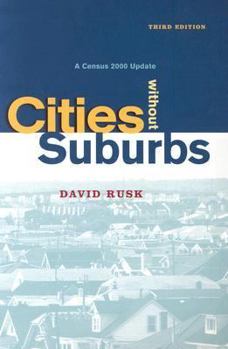Cities Without Suburbs: A Census 2000 Update
Cities without Suburbs, first published in 1993, has become an influential analysis of America's cities among city planners, scholars, and citizens alike. In it, David Rusk, the former mayor of... This description may be from another edition of this product.
Format:Paperback
Language:English
ISBN:1930365144
ISBN13:9781930365148
Release Date:May 2003
Publisher:Woodrow Wilson Center Press
Length:154 Pages
Weight:0.55 lbs.
Dimensions:0.4" x 6.4" x 9.0"
Grade Range:Postsecondary and higher
Customer Reviews
1 rating
as good as the first "Cities Without Suburbs"
Published by Thriftbooks.com User , 20 years ago
but better, because he includes 2000 Census data. The Census data bolsters his basic conclusion (that cities prosper if they can annex newly developing areas, but fail otherwise), and contains a variety of other interesting facts. For example, the data assembled by Rusk shows that there is some evidence of gentrification, as shown by the fact that some cities have narrowed the economic gap between city and suburb. On the other hand, such gentrification has typically been quite limited; for example, in Chicago, one of America's most improved cities, per capita city income increased from 66% of suburban income in 1990 to a still-anemic 71% of suburban income in 2000. Rusk assembles piles of data to show how "elastic" cities (cities that can annex suburbs) differ from "inelastic" cities- typically the former grow instead of declining, are less segregated, and have better bond ratings.





